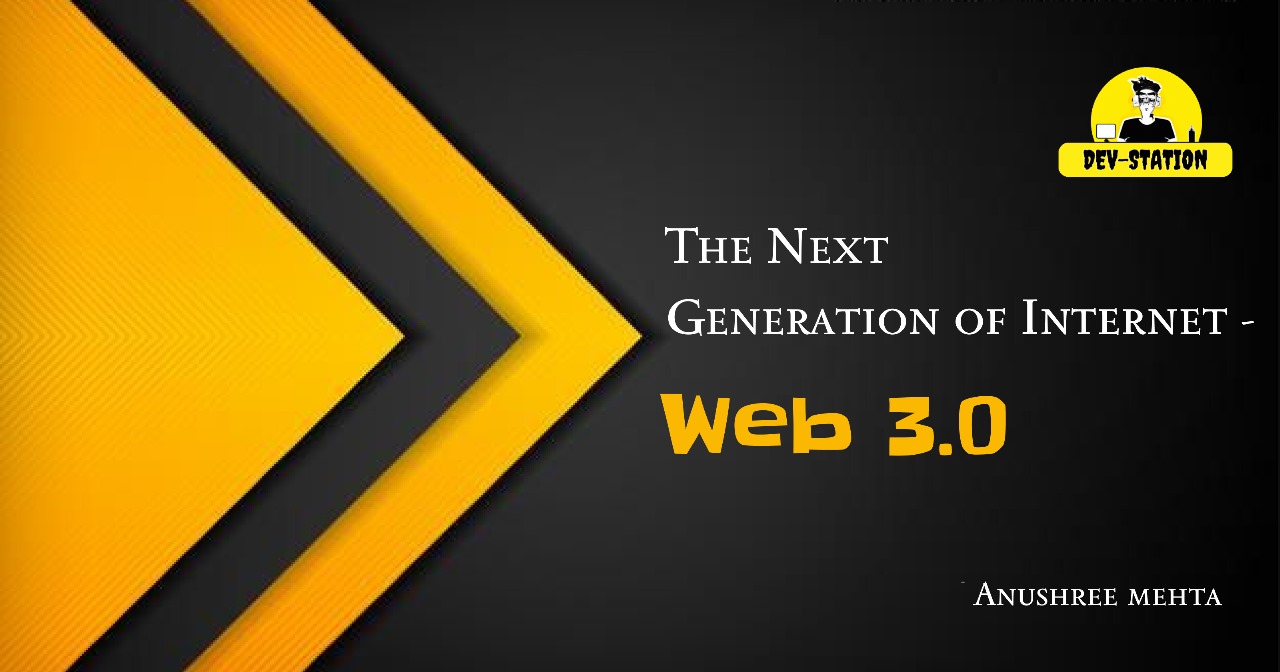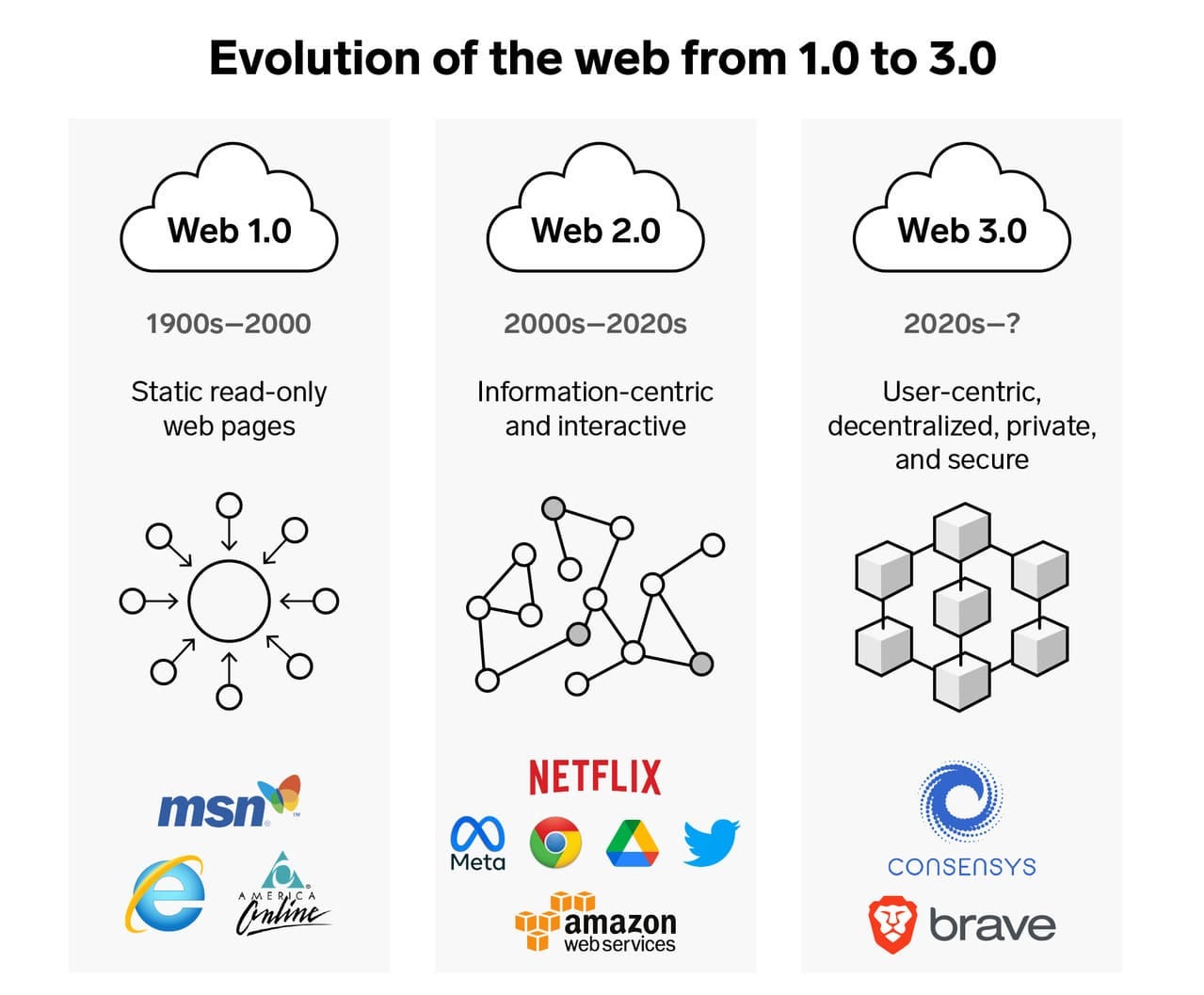The Web3 universe
 Anushree Mehta
Anushree Mehta
The next iteration of web2.0 is booming at a great pace with unexpected growth and opportunities. As blockchain technologies , DeFi, NFTs continue to grow, the need for skilled developers is ascending. In this blog we will explore the blooming of web3, the need for skilled and talented developers and some measures to improve educational space in web3.
What is WEB 3?
Web 3, or Web 3.0, is the next generation of the internet, emphasizing decentralized, user-centric platforms and services.
Web3 is like a new version of the internet where you control your data and assets directly, without relying on big companies. Imagine you play an online game (dApp) where your items (tokens) are stored securely on a public ledger (blockchain) that everyone can see but no one can alter. You can trade these items with others directly, using digital money (cryptocurrency), without needing a bank or a middleman. This makes the internet more secure, private, and user-centered. For example, Ethereum allows you to create and trade unique digital art (NFTs) directly with anyone in the world.
The main features why this space is booming so much in 2024 includes- decentralization, data ownership, privacy, security ,innovation , monetization and economy ,And the user experience is just amazing. All these facts are responsible for the booming of this iteration.
The Evolution of the Web: From Web 1.0 to Web 3.0
The internet has undergone significant transformations since its inception, evolving from static web pages to interactive social platforms, and now towards a decentralized and user-controlled internet. Here's a brief overview of this journey.
Web 1.0: The Static Web (Early 1990s to Early 2000s)
1990: Tim Berners-Lee invents the World Wide Web, enabling access to static web pages.
1993: Mosaic browser popularizes web browsing, allowing users to view text and images together.
1998: Google revolutionizes search, making information more accessible.
Web 2.0: The Social Web (Early 2000s to Present)
2004: Facebook launches, marking the rise of social media and user-generated content.
2005: YouTube makes video sharing mainstream, enabling users to upload and share videos.
2007: The iPhone accelerates mobile internet usage, making the web accessible on the go.
2010: Instagram emphasizes visual content sharing, adding a new dimension to social media.
Web3: The Decentralized Web (Mid 2010s to Future)
2015: Ethereum introduces smart contracts and decentralized applications (dApps), laying the foundation for Web3.
2017: The ICO boom brings attention to blockchain's potential in various sectors.
2020: Non-Fungible Tokens (NFTs) gain popularity, transforming digital art and collectibles.
2021: Major companies and institutions start investing in Web3 technologies.
2023: Continued growth in decentralized autonomous organizations (DAOs) and Web3 infrastructure.
Key Differences
Web 1.0: Static, read-only content with limited user interaction.
Web 2.0: Interactive, user-generated content with social media and mobile internet.
Web3: Decentralized, user-controlled data, blockchain-based applications, and smart contracts.

Explosive Market Growth
Web3, the next generation of internet technology built on blockchain, is experiencing rapid growth:
Blockchain Adoption: The global blockchain market size was valued at USD 3.0 billion in 2020 and is projected to expand at a compound annual growth rate (CAGR) of 82.4% from 2021 to 2028.
DeFi Expansion: The total value locked (TVL) in DeFi projects surpassed $100 billion in 2021, underscoring the rapid adoption of decentralized financial systems.
NFT Market: The NFT market exploded in 2021, with sales reaching over $17 billion, up from $82.5 million in 2020.
Emerging Opportunities
This rise in web3 is creating massive opportunities in:
- Entrepreneurship :
New startups and companies are emerging rapidly in this market and solving great problems.
- Investments:
Venture capital investment in blockchain and crypto startups surpassed $25 billion in 2021, reflecting strong financial support for innovation. In the first quarter of 2024 alone, $2.49 billion was invested across 603 deals, marking a 29% increase in funding and a 68% rise in deal count from the previous quarter.
Improving web3 education:
Despite such massive exposure, there are still the educational gaps that need to be filled.
- Educational institution
Introducing web3 to the academic curriculum should be the first step to inculcate this new iteration to daily life of computer science students.
need of proper , structured and certification courses are there within the institutions.
- Bootcamps and Workshops
Intensive Training Programs: Establish bootcamps and workshops that offer intensive training in blockchain technologies.
Hackathons and Competitions: Encourage participation in hackathons to foster innovation and practical experience.
- Community and Mentorship Programs
Developer Communities: Support and expand existing developer communities to provide mentorship and networking opportunities.
Mentorship Programs: Establish mentorship programs where experienced developers can guide newcomers.
Conclusion
With this massive boom of web3, there is a high demand of developers on a global level, and there is an urgent need to fill educational gaps. Embracing and investing in Web3 education today will shape the future of the digital world.
Give a follow to stay updated with our latest blogs :)
Subscribe to my newsletter
Read articles from Anushree Mehta directly inside your inbox. Subscribe to the newsletter, and don't miss out.
Written by

Anushree Mehta
Anushree Mehta
Hii!! i am anushree mehta currently pursuing my btech degree from Poornima college of engineering in CS AI branch. i am a passionate front end developer and i am willing to contribute to the web3 market. i am working as a volunteer @dev station as a technical content writer. i love to attend and organise hackathons , this year i was the co-organiser of hack-it-sapiens - a national level hackathon.